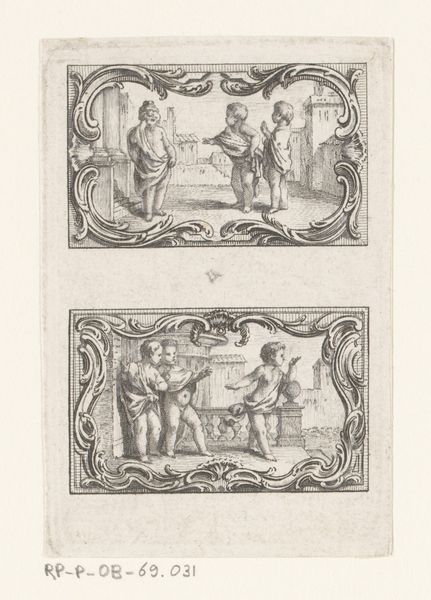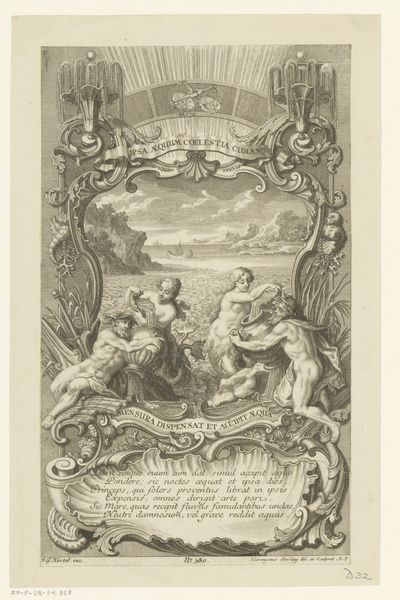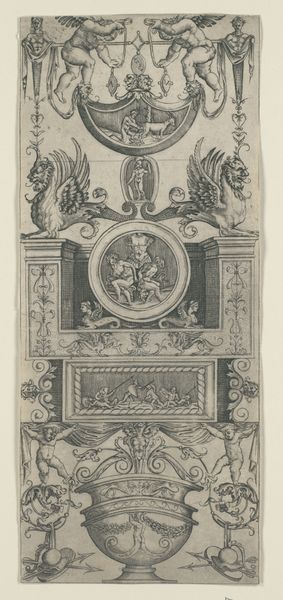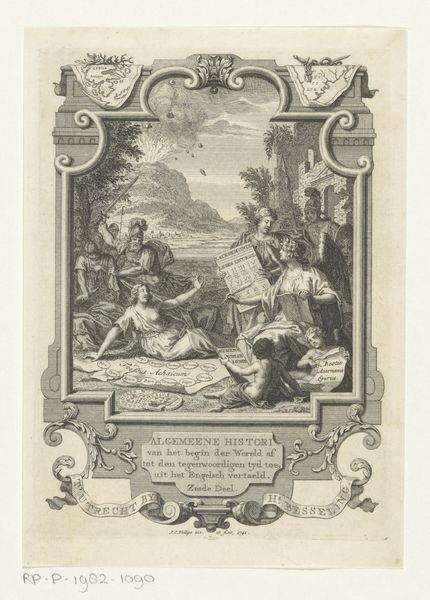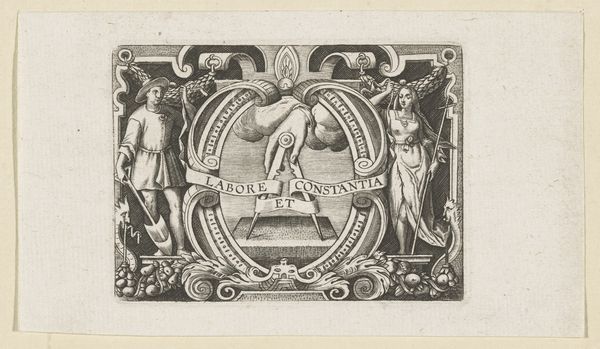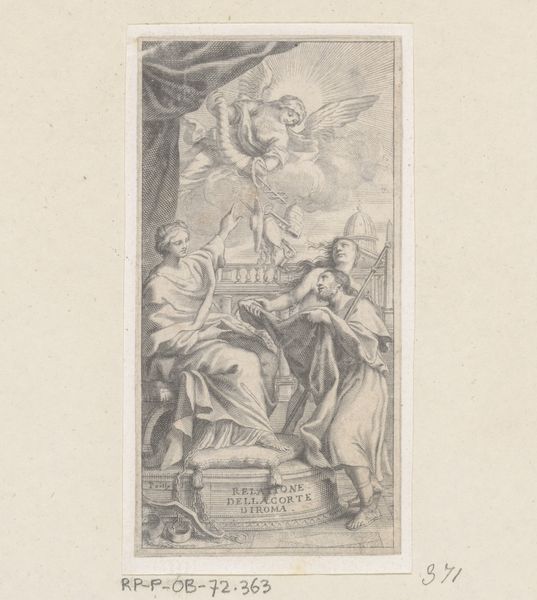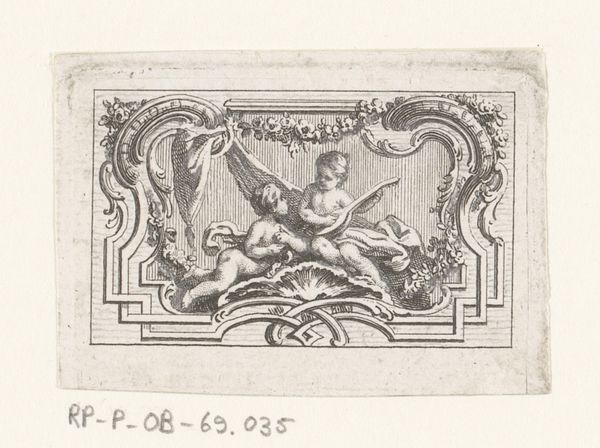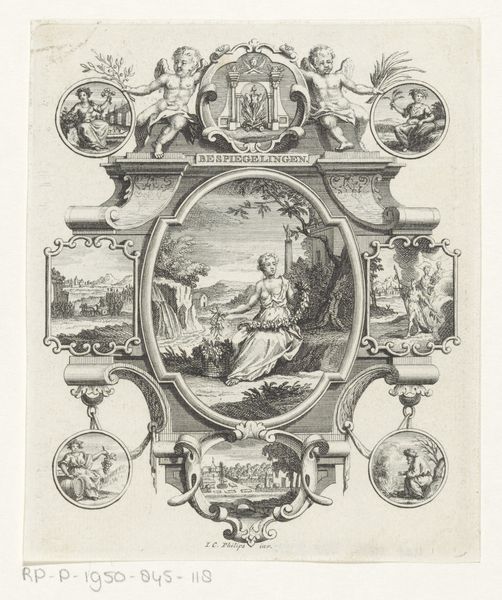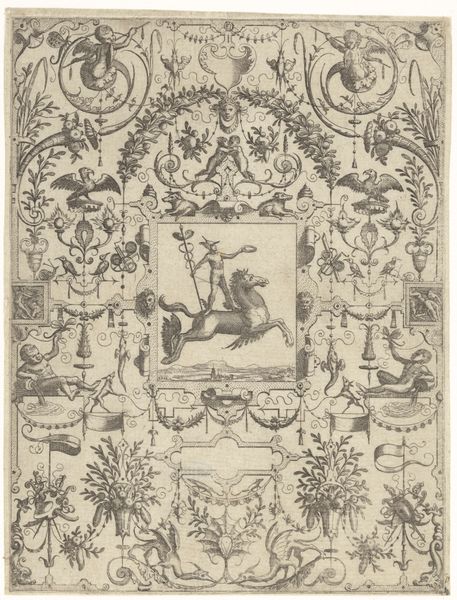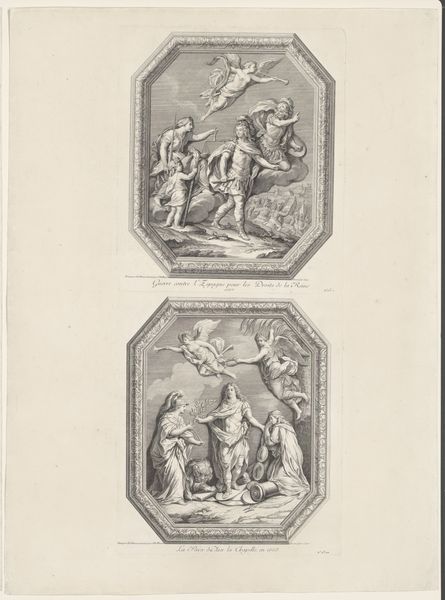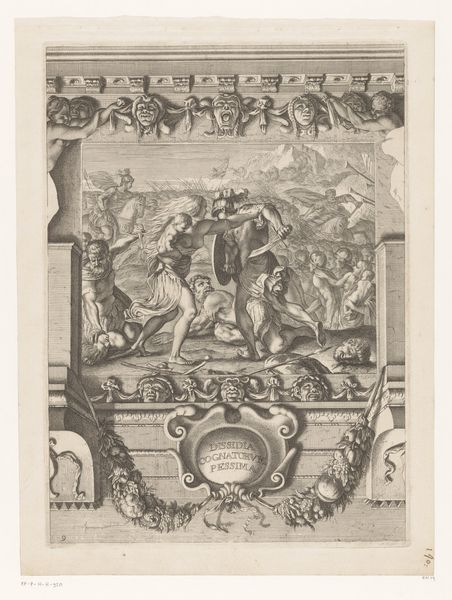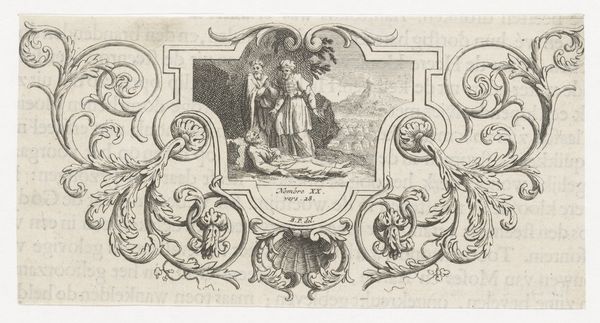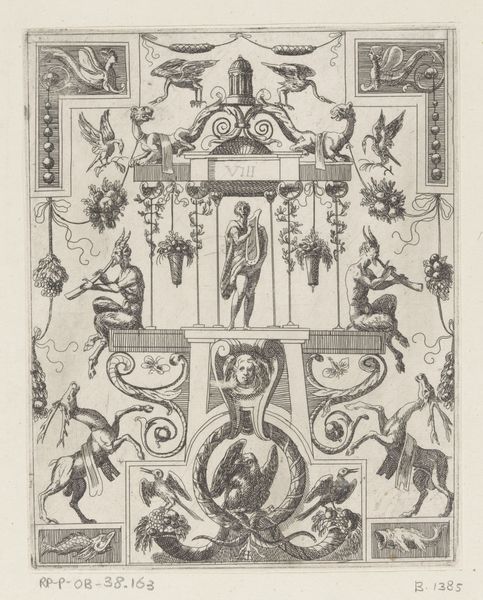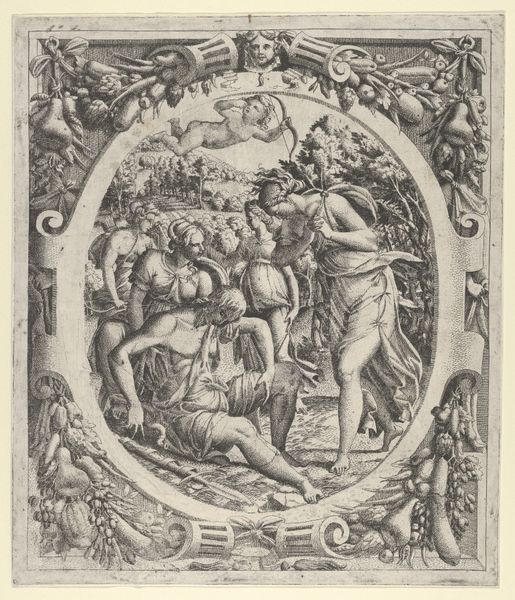
print, engraving
#
allegory
#
baroque
# print
#
figuration
#
engraving
Dimensions: height 89 mm, width 62 mm
Copyright: Rijks Museum: Open Domain
Curator: Here we have "Twee vignetten met drie putti," or "Two Vignettes with Three Putti," an engraving crafted between 1717 and 1783, now residing at the Rijksmuseum. Jacques Philippe Le Bas brought this design to life. Editor: The vignettes have a somber air. The composition, split into these distinct registers, creates a visual contrast between vulnerability and playfulness. What are we seeing here? Curator: Precisely, these contrasting themes point towards societal ideals that hinge on representations of childhood and innocence. The putti symbolize themes related to familial duty and the transition into adulthood within this historical and social milieu. Editor: Tell me more about the lines; so delicate. The baroque style ornamentations framing the putti is like capturing moments on a stage. Look at the textures of the engraved line – dense in shadow and light. Curator: And we see how the top vignette alludes to scenes of domesticity—mother and child—while the lower suggests communal interactions with youthful figures around what seems to be grave site. These juxtaposed settings imply stages of life and death. The artist probably engages with these topics, mirroring societal preoccupation with birth, morality, and transition. Editor: Do you think the symmetry achieved using visual harmony contributes to or subtracts from their respective narratives? What about these settings suggesting certain implications, can you explain more about what feelings they provoke for you? Curator: The engravings’ formalism lends itself to discussing the role of women and the expectations around the performance of grief and duty in the context of the Enlightenment period, and how images reinforced particular values around mourning. Editor: Viewing this piece through its form offers a more nuanced reading; it goes beyond mere aesthetics into understanding their contribution in delivering these images of melancholy and cherubic lightness that transcends history. Curator: Reflecting on these vignettes and considering not only what they portray but also how their structures and juxtapositions reveal broader ideologies helps us to acknowledge that art mirrors and molds our understanding of culture and identity. Editor: Agreed; to dissect such careful details illuminates not just technique, but how this medium of prints allowed complex narratives to permeate their historical moment.
Comments
No comments
Be the first to comment and join the conversation on the ultimate creative platform.
